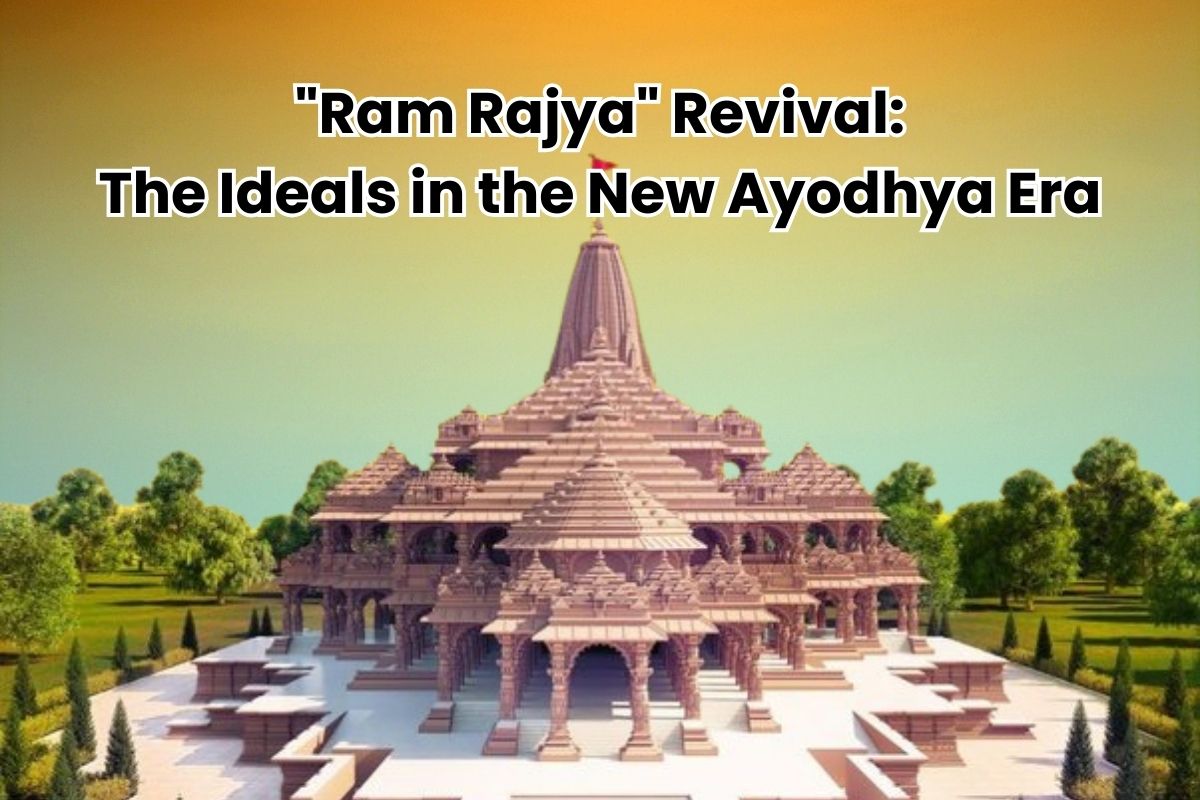
As Prime Minister Modi gears up to inaugurate Ayodhya’s new Ram temple in the fourth phase, the concept of “Ram Rajya” resurfaces in political discussions. This age-old ideal, rooted in Lord Ram’s reign, is intricately woven into the fabric of the Indian Constitution.
The Essence of “Ram Rajya”
“Ram Rajya” signifies a utopian state characterized by justice and prosperity, shaped by Lord Ram’s rule upon his return to Ayodhya after a 14-year exile. It epitomizes ethical governance guided by dharma.
Diverse Interpretations Unveiled
However, the term carries diverse meanings for different factions. Some use it to underscore principles of equality and welfare, while others argue that it promotes majoritarianism, potentially marginalizing minorities. Debates center on whether “Ram Rajya” truly reflects pluralism or harbors a Hindu nationalist agenda.
Gandhi’s Inclusive Vision of “Ram Rajya”
Mahatma Gandhi offered a unique interpretation, viewing “Ram Rajya” as a democratic state that respects all faiths equally. For him, Lord Ram embodied universal virtues transcending religious boundaries. This perspective aligned with Gandhi’s interfaith alliances against British rule.
Religious Symbolism in Politics
Gandhi adeptly merged religion and politics, employing symbols meaningful to diverse belief systems to forge collaborative movements. His goal, however, was constitutional equality within India’s diverse landscape, not the dominance of Hinduism.
Contemporary Appropriation Critiqued
Critics argue that modern political invocations have distorted the core values of “Ram Rajya.” Instead of promoting tolerance, religious rhetoric is now used to polarize communities and target minorities, deviating from the pursuit of justice.
Risks to Pluralism and Social Cohesion
In an increasingly charged environment, analysts caution against using faith-based terminologies for political gains. This approach may erode foundational principles of inclusiveness and secularism, potentially fostering extremism and jeopardizing social harmony.
Upholding Constitutional Safeguards
With religious identities gaining political prominence, observers stress the importance of implementing constitutional safeguards. These safeguards should center around equality, non-discrimination, and minority rights to preserve Gandhi’s vision of unity in diversity through a compassionate “Ram Rajya.”
Reaffirming Commitment to Secularism
As Ayodhya emerges as a symbol of Hindu aspirations, some argue for a reaffirmation of India’s secular foundations. This is crucial to prevent the politicization of religions and maintain national unity, social stability, and economic development.
Ayodhya Ram Temple: Bonding or Dividing?
As Modi inaugurates Ayodhya’s landmark temple, founded on faith in Ram’s virtues, analysts debate its long-term impact. The crucial question is whether the symbolism promotes shared national pride or primarily galvanizes Hindu nationalist objectives, risking further alienation of minority groups. Only an inclusive “Ram Rajya” can fulfill Gandhi’s aspirational vision.







